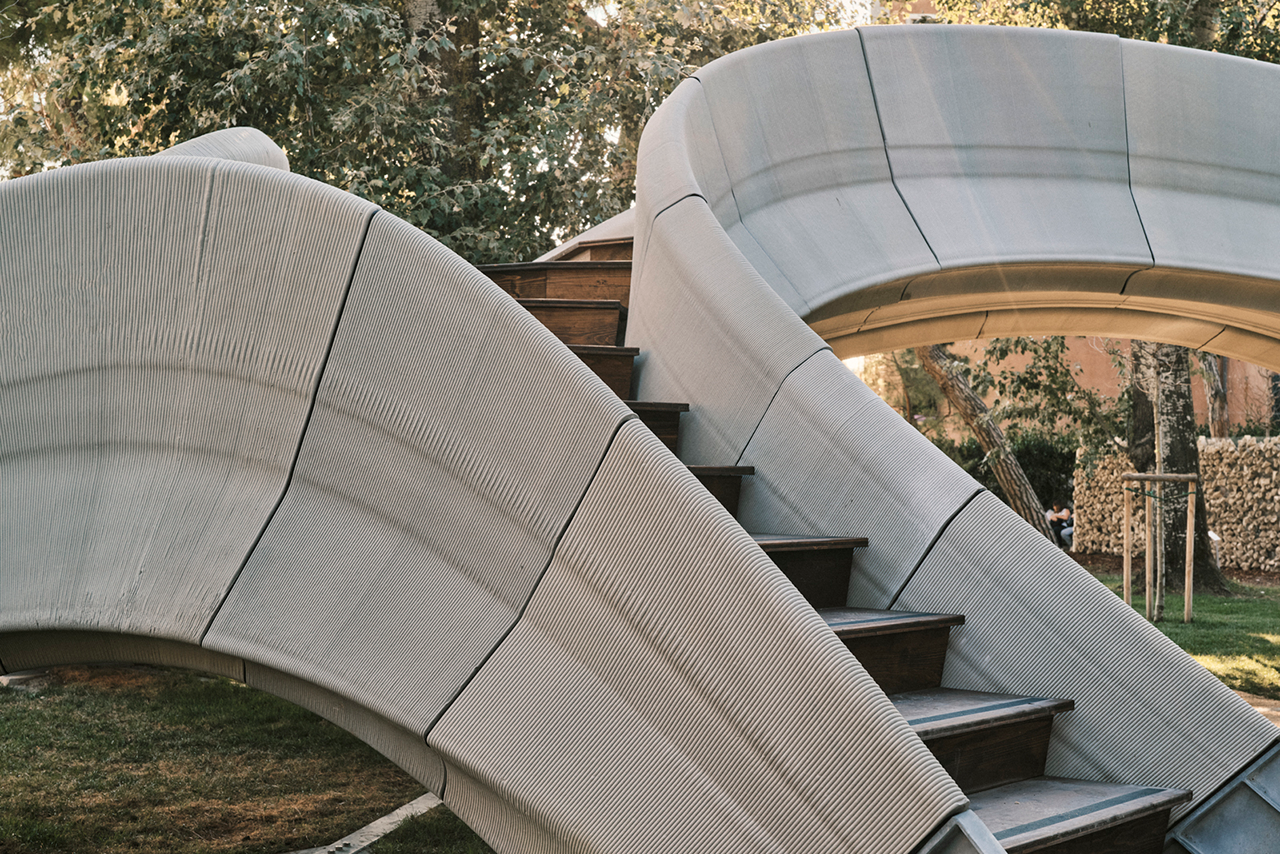Can concrete build a better world? Singapore’s scientists think so
Scientists in Singapore have found a way for concrete to absorb CO2 instead of emitting it. Could this invention finally make construction part of the climate solution?
I nearly skipped past the press release. Its headline is not exactly enticing: “NTU Singapore scientists develop 3D concrete printing method that captures carbon dioxide”. But something made me pause for a second look.
The wordy announcement from Singapore’s Nanyang Technological University (NTU) refers to a new 3D-printing process that injects carbon dioxide into concrete as it prints. Though it might sound complicated, it’s simple chemistry. As carbon dioxide reacts with the concrete mix, it turns solid and gets trapped in the material. The aim? To reduce concrete’s sizable carbon footprint – the building block of modern society is the second most-used material in the world and a source of around 8 per cent of global CO2 emissions due to the energy-intensive process that goes into producing it. It’s a noble cause, given the beauty of the material, showcased by architectural masters such as Carlo Scarpa (pictured top), with NTU’s work complementing other concrete innovators including Swiss-headquartered Holcim (pictured bottom).

Admittedly, it’s hard to draw attention to carbon-eating concrete at a time when bold space ventures, sleek gadgets and ever-smarter AI capture imaginations and headlines. The obvious hooks are missing: no celebrity founder, no life-changing promise. But hidden in the university’s no-fanfare project is a compelling idea, the undeniable elegance of turning a problem into a solution – it transforms concrete production and its construction into carbon capture, reversing the plot.
It reminds me of US-Israeli designer Neri Oxman’s provocative question: “Is there a world in which driving a car is better for nature than a world in which there are no cars?” Is there a world in which using concrete is better for the environment than not using concrete? Not less bad but actually good?
NTU’s innovation suggests this very possibility. For developers and architects, the idea is liberating. Imagine designing without climate guilt, where every bridge, tower, column and beam is a net good for the environment, actively improving the surroundings.

What makes this innovation promising is that it combines two frontiers of innovation: carbon capture and 3D printing. While carbon capture has been retrofitted into traditional cement plants, NTU’s innovation integrates the abatement method into the production process itself. The technology also makes for a superior concrete: it is stronger, easier to print and captures more carbon than other types of 3D-printed concrete. This means faster construction with less material and labour. This method breaks new ground, enabling design that optimises form and carbon capture in ways traditional casting never could.
But here’s the challenge. While digital innovation races ahead with weekly breakthroughs, the building and construction industry plods along, operating on decade-long cycles. Concrete remains pretty much locked in 20th-century processes. Yet the climate urgency demands transformation at speed and scale.
The NTU team is already pushing its work further while it awaits a patent, exploring how to capture waste gases instead of pure carbon dioxide. But breakthroughs that only excite industry insiders only partially drive the transformation that we so desperately need. Where are the visions that are bold enough to capture broader imaginations? The kind of moonshot ambition that rallies the rest of us?
Maybe it’s time to take a page from big tech’s playbook. Instead of asking “How can we get concrete to be five per cent greener?”, we should ask, “What if concrete made the planet better, not worse?” Shifting from mitigation to mission – from villain to hero – in the climate story. Now that’s exciting.
Yvonne Xu is a Singapore-based design writer and regular Monocle contributor. Fancy more concrete ideas? Find a debate on the material here, featuring Holcim, and read up on an expert use of it by Carlo Scarpa here.



